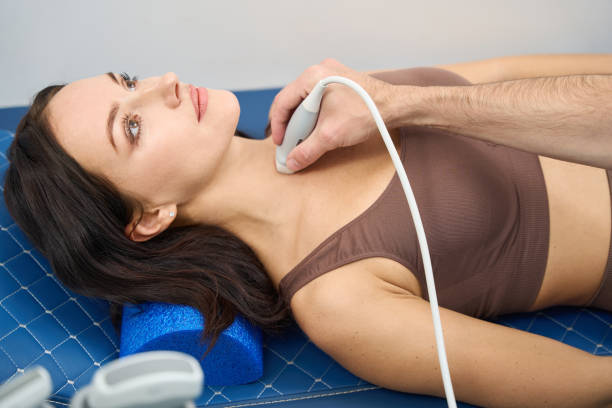Unveiling the Potential of Vibroacoustic Therapy: A Symphony for Healing
The healing power of sound has long fascinated humanity, but recent advancements in vibroacoustic therapy are revolutionizing our understanding of sonic medicine. Could the gentle vibrations of carefully calibrated frequencies be the key to unlocking a new frontier in wellness? As we delve into the world of vibroacoustic therapy, prepare to discover how this innovative approach is harmonizing body and mind in ways previously unimagined.

In the decades that followed, researchers and practitioners across the globe began to explore the potential of vibroacoustic stimulation. They discovered that by combining audible sound with physical vibrations, they could create a synergistic effect that penetrated deep into the body’s tissues, promoting relaxation, pain relief, and overall well-being.
The Science Behind the Sound
At its core, vibroacoustic therapy operates on the principle of resonance. Every cell in our body vibrates at a specific frequency, and when exposed to external vibrations that match or complement these frequencies, beneficial effects can occur. VAT typically utilizes low-frequency sounds, ranging from 20 to 100 Hz, which are transmitted through specially designed furniture or devices that allow the vibrations to be felt throughout the body.
Research has shown that these vibrations can stimulate circulation, reduce muscle tension, and even influence brainwave patterns. A study published in the Journal of Evidence-Based Integrative Medicine found that vibroacoustic therapy could significantly reduce pain and improve mood in patients with chronic pain conditions. The mechanical stimulation provided by VAT has also been linked to increased lymphatic flow, potentially aiding in detoxification and immune function.
Applications in Modern Medicine
As the body of research supporting vibroacoustic therapy grows, so too does its application in various medical settings. Hospitals and rehabilitation centers are increasingly incorporating VAT into their treatment protocols for a wide range of conditions.
In the field of neurology, vibroacoustic therapy has shown promise in managing symptoms of Parkinson’s disease. A study conducted at the University of Miami found that VAT could improve motor function and reduce tremors in Parkinson’s patients. The gentle vibrations are thought to stimulate neural pathways, potentially promoting neuroplasticity and improving overall motor control.
Mental health professionals have also begun to explore the benefits of VAT for conditions such as anxiety and depression. The deep relaxation induced by vibroacoustic stimulation can help reduce stress hormones and promote a sense of calm and well-being. Some practitioners have even incorporated VAT into mindfulness and meditation practices, creating immersive experiences that enhance the mind-body connection.
Beyond Medicine: Vibroacoustic Therapy in Wellness and Performance
The applications of vibroacoustic therapy extend far beyond the medical realm. Athletes and fitness enthusiasts are discovering its potential for enhancing recovery and performance. By applying targeted vibrations to specific muscle groups, VAT can help reduce post-exercise soreness and improve flexibility. Some professional sports teams have even installed vibroacoustic chairs in their locker rooms to help players recover more quickly between games.
In the world of spa and wellness, vibroacoustic treatments are becoming increasingly popular. Luxury resorts and day spas are offering VAT sessions as a unique way to promote deep relaxation and stress relief. These treatments often combine the physical vibrations with soothing music or nature sounds, creating a multi-sensory experience that transports clients to a state of profound tranquility.
The Future of Vibroacoustic Therapy
As technology continues to advance, the future of vibroacoustic therapy looks increasingly promising. Researchers are exploring the potential of personalized VAT treatments, using artificial intelligence to tailor frequencies and vibration patterns to an individual’s specific needs and physiological responses.
Wearable devices incorporating VAT technology are also on the horizon. Imagine a smartwatch that could deliver targeted vibrational therapy throughout the day, helping to manage stress, improve focus, or even enhance sleep quality. These innovations could make the benefits of vibroacoustic therapy accessible to a much wider audience, potentially revolutionizing our approach to personal wellness.
Harmonizing Health: Key Notes on Vibroacoustic Therapy
- VAT typically uses frequencies between 20-100 Hz for optimal therapeutic effect
- Sessions usually last 20-40 minutes, with some protocols recommending daily treatments
- Vibroacoustic therapy can be combined with other modalities like massage or acupuncture for enhanced benefits
- Some individuals may experience temporary dizziness or nausea during their first VAT session as the body adjusts to the vibrations
- Pregnant women and individuals with certain medical conditions should consult a healthcare provider before trying VAT
- The effects of vibroacoustic therapy can be cumulative, with regular sessions potentially leading to longer-lasting benefits
As we continue to unravel the complex relationship between sound, vibration, and human physiology, vibroacoustic therapy stands as a testament to the power of innovative thinking in health and wellness. By harnessing the healing potential of sound and touch, this emerging field offers a harmonious approach to well-being that resonates with the body’s natural rhythms. As research progresses and technology evolves, vibroacoustic therapy may well become a cornerstone of integrative medicine, offering a non-invasive, drug-free option for those seeking to improve their health and quality of life.





